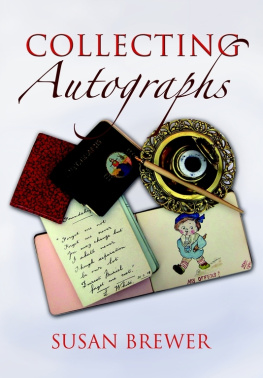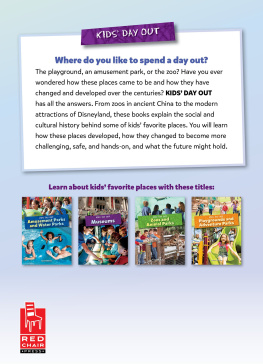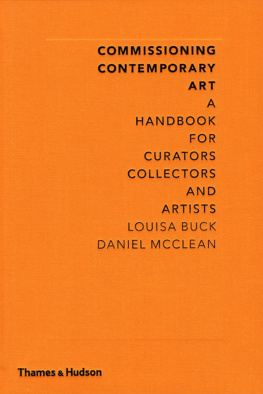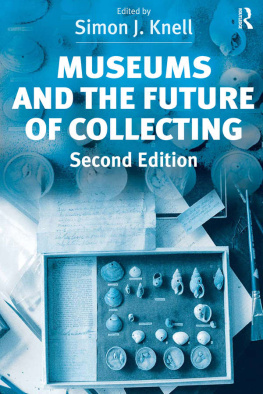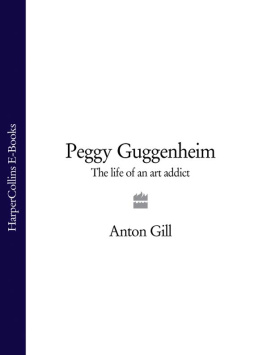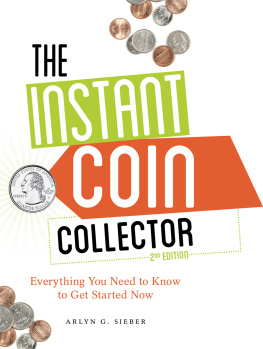Published by Open Books
Copyright 2019 by David L. Gersh
All rights reserved. No part of this book may be reproduced, scanned, or distributed in any printed or electronic form without permission except in the case of brief quotations embodied in critical articles and reviews.
Interior design by Siva Ram Maganti
Cover images Chamille White shutterstock.com/g/chamille
ISBN-13: 978-1948598149
A simple piece of advice borrowed from Abbie Hoffman: "Steal this book!" Paul Hayes Tucker, art historian and curator, Paul Hayes Tucker Distinguished Professor of Art, Emeritus, University of Massachusetts Boston
David Gersh has written a book that is wise, articulate, and dare I say funny. This is clearly a true passion for the author and will ignite, with a guiding hand, how you can actually bring great art into your life. Noah benShea, International Best Selling Author and Philosopher
David Gersh simplifies one of the worlds more esoteric pastimes. His knowledgeable account of collecting art is interspersed with delightful anecdotes about artists and collectors, making this a treasure. Kathleen Sharp, award-winning author of Mr. & Mrs. Hollywood: Edie and Lew Wasserman and Their Entertainment Empire
Other Books by David L. Gersh
Art Is Dead
Going, Going, Gone
Desperate Shop Girls
Art Attack
The Whisper of a Distant God
For Anne
COLLECTING ART IS A passion. The art world is opaque and secretive. Collecting requires knowledge and discipline. But, living with good art is special. Its feeling doesnt wane and it can bring joy every day.
This book explores a flaw in the art market that provides collectors, who have limited resources, the means to collect one-of-a-kind works by extraordinary artists.
There is always the new, new thing. The hot, young, sleek maverick of the moment who is the toast of the art world.
Tastes change and collectors have short memories. Unless there is a gallery actively pushing an artists work, or, even perhaps, a museum retrospective, enumerable artists fall from the lips and minds of collectors and professionals. This is what creates opportunity.
Artists who had critical success, who were talented and devoted, who were handled by world renowned galleries and collected by major museums, have been forgotten. There are hundreds of them. You would not know their names. I certainly didnt. Even museum professionals who dont know them are delighted when they see their work.
Just a single example. I had never heard of Carmen Herrera. I had never seen her work. My wife, Anne, and I were in New York in 2017 and happened upon the Whitney retrospective, celebrating Herreras 101st birthday. I was simply blown away. It was the first exhibition of her art in New York in over 20 years.
In the 1950s, Herrera developed a distilled geometric style of abstraction and reduced her palette to three colors for each composition. Her work emerged at the same time as that of Ellsworth Kelly, in a case of parallel development. Kelly became famous. Carmen Herrera was forgotten.
Herrera prefigured Minimalism by almost a decade. She didnt sell her first piece of art until 2004, when she was almost 90 years old. I wish I had bought it. I wish I had discovered her before anyone else. She is what this book is about.
In case you might think this oversight is limited to recent artists, the Frick Collection in New York is installing a major show of the Renaissance painter, Giovanni Battista Moroni, in the first major exhibition of his work in the United States. As The New York Times said, The history of art is littered with significant painters who never reach the same level of renown as some of their peers. Sometimes omissions are justified by a disparity of skill, but in certain cases bad luck, prejudice or misunderstanding prevented artists from getting recognition.
After launching a probing assault on my teeth, my dentist decided to upgrade his dingy to a yacht. He left my art budget in a shambles. I had to find a new way to collect. It sent me in a different direction and on to some novel discoveries. Bless his heart.
I collect dead artists. That is bad for the artists, but good for me. Their body of work is set, both in quantity and quality. It allows research and the ability to qualify their art. The methods of doing so are my story. To be able to create a collection of original art of high quality on a limited budget is a grand adventure.
The art world is a jungle. It is largely unregulated. It is full of stunning flora and beautiful creatures. A glistening river of art flows through it. And predators hunt the unwary.
To perhaps peak your curiosity and to lure you into its beauty and shadows, I survey the ways and the scandals that exist within it. But once you enter this jungle, it will never loosen its grip on you.
In some ways, this book is a primer on collecting. There may be background material familiar to the more experienced collector. But it took me years of collecting to learn a lot of these things, so perhaps a review will be helpful.
In certain circles, collectors are seen as rich, privileged and powerful. Most of these, observed Loic Gouzer of Christies, dont actually enjoy discussing art and asking questions. They see a Twombly painting and Gouzer will say, You should compare it to others in Twomblys catalogue raisonne. And theyll respond, I just need to know if its an A or an A+ or a B+.
If you are interested in this book, you are not rich. Only passionate or curious. Collecting is a lifelong journey. Goethe, the poet, wrote that the collector is a happy person. I believe he was right.
So, what is a shoestring? And what is great art? For that matter What is art?
For me, writing a book is the crossroads of hubris and humility. Hubris because I think someone will want to read what I have written. Humility because I fear no one will. So, I hope you read on. Or at least that you have already bought this book.
Chapter 1
ON MAY 5, 2018, RAGO Auctions in Lambertville, New Jersey, held a Post-War & Contemporary art auction. Anne and I collect abstract art with most of our collection centered on works from the mid-1970s. I had never heard of Rago Auctions until I started looking at Bidsquare. Bidsquare is an online local auction aggregator. It allowed me to find local auction houses I otherwise would have been unable to discover.
Rago has an online website. Like all auctions now, the entire catalog was free, online. There were 297 lots in the auction. I collect dead artists. It narrowed the selection.
Many works were wonderful. Some were prints, art produced in editions, in which I had no interest. And some were just uninteresting. A number were beyond my budget. But quite a few were not. Unlike many auctions, this auction was limited to art within the area we collect. That is one reason I was attracted to it.
I looked at every lot. Twice. The first time was a survey to understand the scope and quality of the art. Of course, some work jumped out at me. In the second review I closely looked at each lot. I wrote down the lot numbers that made me respond viscerally (because I believe emotion is the first step in appreciating a piece of art, particularly abstract art) and then discarded those lots with estimates beyond my budget.



